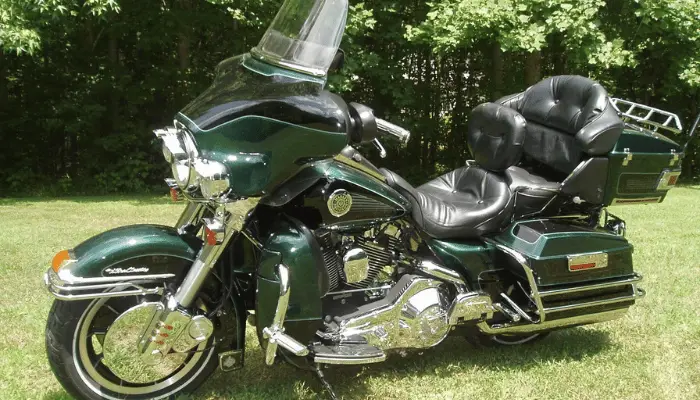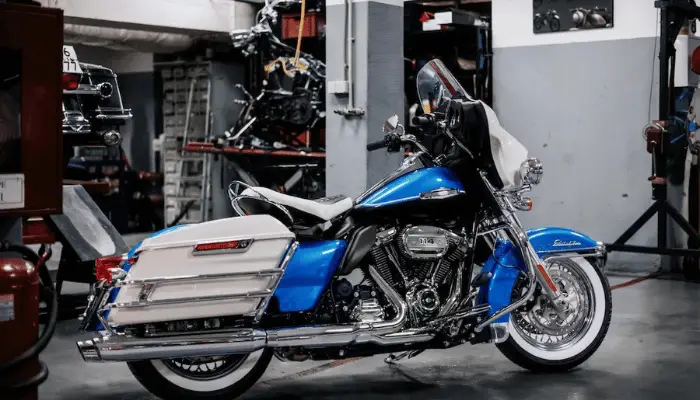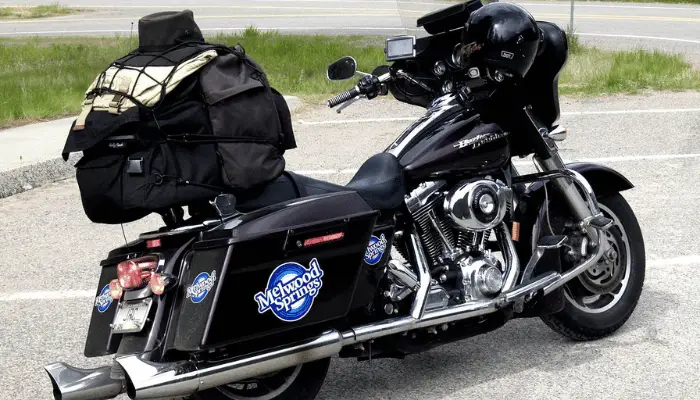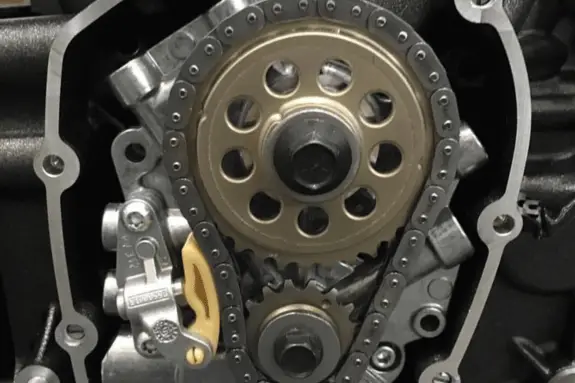Embarking on the thrilling journey of becoming a Harley-Davidson owner can be a euphoric experience, but it’s crucial to be well-informed before you hit the open road.
Harley-Davidson, an iconic American motorcycle brand with a rich heritage, has rolled out countless models over the years, each with their unique allure. However, not all have lived up to the high standards the brand is known for. Some years have notoriously been earmarked by riders and experts alike as the ones to steer clear of when purchasing a Harley.
This article delves into those specific years and models, providing you with valuable insights to ensure your Harley-Davidson experience is not just exhilarating, but also trouble-free. So, buckle up as we navigate through the maze of “what year Harleys to avoid”. Anyways, keep reading and lets get into the details.
Quick Navigation:
Intro Into The Models And Years To Avoid
In this comprehensive guide, we delve into the trials and tribulations of Harley’s manufacturing history and uncover specific model years to steer clear of while exploring their common engine problems.

Electra Glide Years To Avoid
As a future Harley owner, it’s important to know which Electra Glide models to avoid. Here are some production years that received poor user ratings and reliability concerns:
- The 2010 Electra Glide Ultra Classic – this model had issues with the transmission and engine.
- The 2009 Electra Glide Standard – known for electrical problems and oil leaks.
- The 2007-2008 Electra Glide Classic – had issues with the engine and transmission.
- The 1999-2001 Electra Glide Classic – prone to stalling and transmission issues.
Keep reading:
> Electra Glide Problems Glossary
> Super Glide vs Wide Glide
Road Glide Years To Avoid
If you’re considering purchasing a Road Glide, there are some model years to avoid due to common issues. Here’s a list of Road Glide years to avoid:
- 1998: This was the first year of the Road Glide, and it had several design flaws that led to issues with handling and stability.
- 2000-2001: The fuel delivery system on these models had problems with leaking fuel.
- 2009-2013: These models had issues with the frame and swingarm, leading to instability at high speeds.
Related: Road Glide Problems
It’s important to note that Harley has improved their manufacturing processes over time, so newer models may not have these same issues. However, if you’re considering purchasing an older Road Glide, be sure to do your research and look for any known issues before making a purchase.
Read more:
> Harley 96 vs 103
> Harley 103 vs 107
> Harley 107 vs 114
> Wide Glide vs Super Glide

Road King Years To Avoid
If you’re thinking about owning a Road King, there are some years you should avoid due to engine and technical issues. Here are the years that Future Harley owners should stay away from:
- 2004 to 2009: These years are considered the worst for the Road King due to engine failure issues. There were problems with cam chain tensioners, which caused significant damage to the engine.
- 1999: The touring model year of 1999 had cam bearing failures that caused major engine problems. This issue affected both the Twin Cam and Evo engines.
- 2004 Dyna Superglide: The 2004 Road King was marketed as the Dyna Superglide, but it didn’t perform well with customers in terms of design aesthetics and technical issues.
As an iconic Harley-Davidson motorcycle with a classic look, the Road King appeals to many riders. But if you’re considering purchasing one, be sure to avoid these problematic production years.
Related: Road King vs Street Glide
[Glossary of Road King Problems]

Street Glide Years To Avoid
The Street Glide is a popular touring motorcycle model from Harley-Davidson, but there are some years you may want to avoid. Here are the Street Glide years to avoid:
- 2014 – This was the year when the new Project Rushmore models were introduced, but unfortunately, many owners reported issues with clunking noises in the transmission.
- 2015 – The 2015 Street Glide had engine problems that caused it to stall unexpectedly and sometimes even catch fire.
- 2016 – Electrical issues plagued the 2016 Street Glide, causing problems with the bike’s gauges and lights.
- 2017 – The 2017 model suffered from overheating issues that could cause significant damage to the engine if not addressed promptly.
- 2018 – The final year of the Project Rushmore models also had electrical issues, including sudden battery drain and malfunctioning infotainment systems.
If you’re looking for a used Harley-Davidson Street Glide, it’s essential to research and check carefully before making a purchase. While these models may have had problems during their release years, proper maintenance and repairs can ensure longevity on the road. As always, regular motorcycle maintenance is vital for performance and reliability regardless of which Harley model you choose.
Related: Street Glide Problems Round-Up
Harley Twin Cam Years To Avoid
During my research, I found out that Harley Davidson’s Twin Cam engines have had some mechanical problems over the years. Here are the Harley Twin Cam years to avoid:
- 1999-2002 models: These models are considered to be the worst due to camshaft chain tensioner failure and high crank runout.
- 2003-2006 models: In 2003, Harley Davidson made changes to cut production costs, leading to these engines being considered to avoid.
Overall, it is important to do your research before purchasing any Harley-Davidson motorcycle with a Twin Cam engine. Knowing which model years to avoid can save you from potential headaches and costly repairs down the road.
Related article:
> Harley Twin Cam Years to Avoid
> Harley Twin Cam Problems Overview
You’ll also enjoy:
Reading about my experience renting my motorcycles for cash on the side:
Riders Share Motorcycle Rentals – My Review As an Owner
Keeping your Harley Davidson running in tip-top shape with these suggestions:
What Was The Twin Cam Issue?
As a potential Harley owner, it’s important to know about the Twin Cam engine issue. Essentially, earlier models of the engine had problems with camshaft chain tensioner failure and high crank runout.
These issues could cause significant wear and tear on the engine over time and can lead to costly repairs.
One main contributing factor was the inclusion of a mechanical plastic foot against the sharp cam chain in 1999-2002 Twin Cam models that caused excessive wear and tear leading to early failures.
It’s worth noting that Harley Davidson has acknowledged these issues with its engines over time and made improvements through its manufacturing process, such as introducing hydraulic lifters instead of solid lifters in newer engines.

content continues below
Other common motorcycle probems:
- Motorcycle sputtering on acceleration
- Deadly speed wobbles you need to prevent
- Spontaneous motorcycle stalling
- Faulty Harley charging systems
- Harley Davidson hot start problems
- Harley Hydraulic Clutch Problems
- Harley evo cranks but won’t start
- Harley Bad Compensator Symptoms
Suggested Read:
- Harley’s Golden Evo Motor: Best Motor Ever? Overhyped?
- Harley 131 Problems too much to handle?
- Is Harley’s 103 a good motor?
content continues below
Is Harley’s Manufacturing To Blame? (Yes)
As a future Harley owner, you might be wondering if manufacturing issues are the root cause of some common problems associated with certain models and years. The answer is yes – at times, Harley-Davidson’s manufacturing processes have contributed to problems in their bikes.
For example, production inefficiencies and assembly errors plagued the company during its period of ownership by AMF (1969-1981). Known for prioritizing cost-cutting measures over quality control, AMF’s influence significantly tarnished the brand’s reputation for building reliable motorcycles.
In more recent times, however, issues with quality control still occur occasionally. For instance, the Twin Cam motor experienced a widespread problem due to poor machining on cam chain tensioners resulting in premature wear and potential engine failure.
Although it’s important to acknowledge that no motorcycle manufacturer is entirely immune to occasional lapses in quality control or assembly line mistakes – even high-end brands like Harley-Davidson – it’s essential for potential owners like you to be aware of specific models and years where these concerns may arise so you can make informed purchasing decisions.
Related article: Who Makes Harley Davidson Oil & Filters?
Have They Improved Their Manufacturing Over Time?
Over the years, Harley-Davidson has certainly made strides in improving their manufacturing process.
One of the key areas where Harley-Davidson focused their attention is on production efficiency and cost-effective management. Following the 2009 recession, they adapted their business model by streamlining processes and introducing offshore manufacturing to keep prices competitive without compromising quality.
Another aspect that underwent significant transformation is motorcycle design and production optimization. Manufacturing upgrades have led to more durable bike components, ensuring longevity for riders who invest in these machines.
In conclusion: through constant efforts to evolve their manufacturing techniques, materials used, motorcycle technology advancements – all pointing towards creating high-quality products – Harley-Davidson has indeed improved over time; ultimately benefiting future owners like you who seek enjoyable riding experiences alongside renowned brand heritage.
Related article: Who manufactures Harley Davidson’s spark plugs?
Key Takeaways on General Problems
Harley – Davidson motorcycles have had common problems such as the “Death Wobble,” heat management issues, and premature component wear due to excessive vibration caused by unbalanced drivetrains or poorly designed motor mounts.
Manufacturing issues have played a role in some of these problems in certain models and years, but Harley has made strides in improving their production standards over time through continuous upgrades.
Honorable mentions to read next:
> Sportster Years To Avoid (If You Know What’s Good For You)
> Shovelhead Years to Avoid Like The Plague (Here’s Why)
> Absolute Worst Harley Fatboy Years to Avoid (Or Else)
> Harley Evo Years To Avoid (+Some History of The Engine)
Specific model years to avoid include 2010 Electra Glide Ultra Classic, 2009 Electra Glide Standard, 2007-2008 Electra Glide Classic, 1999-2001 Electra Glide Classic for the Electra Glide; 1998, 2000-2001, and 2009-2013 for the Road Glide; 2004 to 2009 and 1999 for the Road King; and 2014, 2015, 2016, 2017 ,and 2018 for Street Glides.
Owners should also exercise caution when considering purchasing any Harley-Davidson motorcycle with a Twin Cam engine from model years between late ’90s up till mid-to-late ’00s.
Keep reading: Harley Milwaukee 8 Problems
FAQs:
1. Are there certain years of Harley motorcycles that should be avoided?
Yes, certain years of Harley motorcycles have been known to experience common issues or defects which could cause inconvenience or even pose a safety hazard. It is important to do your research before purchasing a used motorcycle to avoid these potential problems.
2. What are some examples of Harley motorcycle models and years to avoid?
Some common examples include the 2006-2017 Dyna series due to its weak engine mounts causing handling issues, as well as the 1999-2000 Twin Cam engines because of their propensity for oil leaks.
3. What can I do if I already own a Harley from one of the “avoid” model years?
If you already own a Harley from one of these model years, it is recommended that you perform regular maintenance and inspections on your bike to identify any potential issues early on and address them promptly before they worsen over time.
4. Should I only buy newer model-year Harleys?
Not necessarily – although newer models will typically come with better technology and safety features, older models can still provide an enjoyable riding experience for those who prefer classic styling or simply don’t have the budget for a brand new bike. As long as you properly educate yourself on what to look out for when buying used bikes, you can find great deals on older Harleys without compromising performance or reliability.